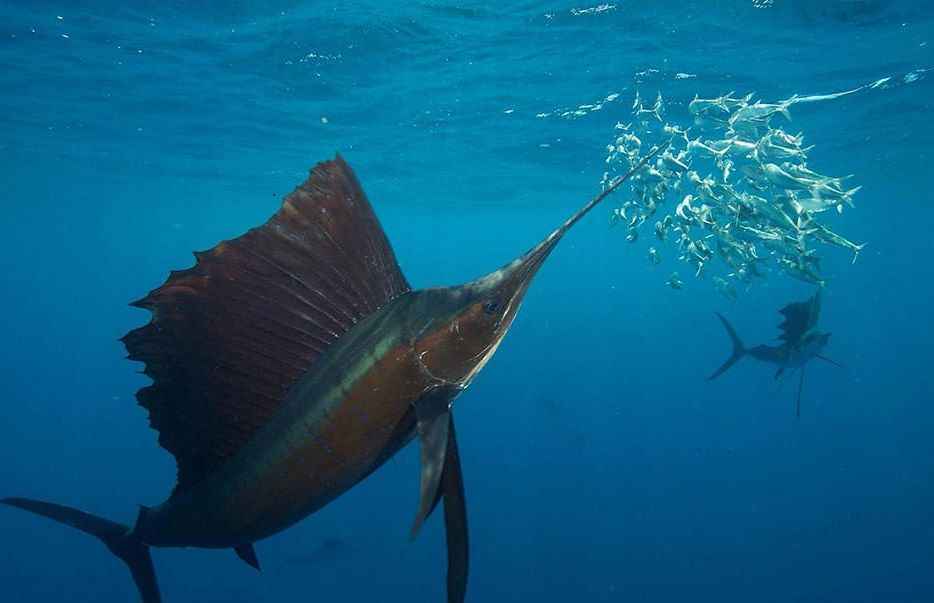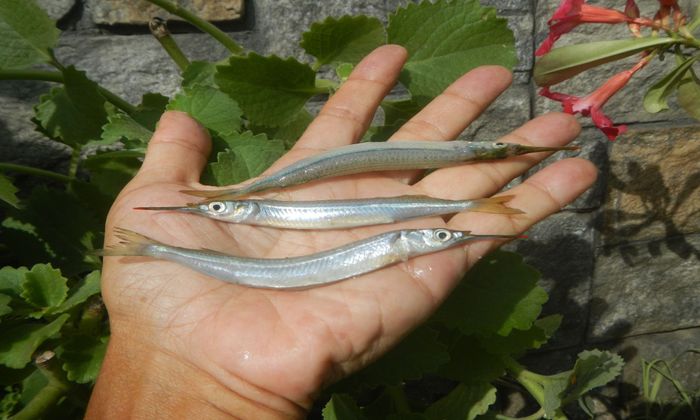Best Bait and Presentation for Sailfish
Have you been wanting to target sailfish but not sure about the best way to do it? Read on to know the best bait and presentation for sailfish.

Sailfish are one of the most coveted trophies for any angler in the ocean. These strong, streamlined swimmers put up a worthy fight, widely known for their acrobatic leaps out of the water.
Anchoring and drift fishing for sailfish is one of the most common tactics to use, usually on the deeper side of reefs where they are known to hang about. However, before you drop down your weight, you’ll need to find the sailfish first, and trolling with live bait is a great way to start. It helps you learn the area and see what species are swimming around.
Through the years, anglers have developed their own complicated rigs and have taken a liking to specific kinds of bait. In this article, we'll take a brief look at the best bait and presentation for sailfish, with the hope that it will help you snag your trophy.

Live Goggle Eyes
One of the most sought-after live bait to use while fishing for sailfish is goggle eyes or bigeye scad, and many anglers spend countless hours and even days looking for them. They’re known to be the bait of choice when it comes to kite fishing for sailfish and can cost an arm and a leg in some places.
However, for the industrious angler, finding and catching “gogs” aren’t that difficult as long as you're patient and don’t mind losing a lot of sleep. These fish are aptly named for their large eyes and can often be found near coastal structures like piers, jetties, and buoys, as well as rocky bottoms, reefs, and wrecks. They can be found at a variety of depths ranging anywhere from shallow waters up to 500 feet deep. Common techniques to catch them for bait include a sabiki rig or a cast net.
Goggle eyes, for reasons unknown, are like bait magnets, which have stumped many anglers until today. Not only are they irresistible to sailfish, but they’re also known to lure in kingfish, dolphins, wahoo, and large yellowfin tunas.
Goggle eyes are usually used in kite fishing rigged up by bridling wherein the hook does not go through the baitfish. Instead, a hook or needle is attached to a wire, rubber band, or rigging floss that is inserted around the fish’s eye socket. This technique is popular when trolling because it keeps the baitfish alive much longer, allows them to naturally swim through the water, and leaves the hook unobstructed for a more secure catch.
Alternatively, you can also hook the goggle eye behind the dorsal fin or the lower backside. However, if it’s windy and the currents are strong, it’s recommended to hook goggle eyes through their mouths instead, as the wire might come loose. Once presented while trolling, it will look injured as it tries to swim away from your boat, luring in that mighty sailfish.

If you can’t score yourself some goggle eyes, there are some other worthy alternatives. Sailfish also love cigar minnows, which can be caught on grass flats with a cast net or sabiki rig as well, because they are known to feed in large schools. You can start by throwing in some chum which helps to lower visibility in the water so they don’t get skittish at the presence of your rig or net. You can bridle them the same way as goggle eyes or pitch them on their lower backs. Cigar minnows are known to work well with groupers and snappers as well, so don't be surprised if you hook one.
Other popular alternatives include blue runners, mullet, pilchards, and threadfin herrings. These are kite fishing go-tos because they are hardy fish and can last longer on an active kite line. Instead of bridling them through the eye, you can insert a needle through the nostril, which is made of a more durable membrane.

Dead-Trolling with Ballyhoo
Ballyhoo is no stranger to being labeled as the perfect bait, since they're abundant and almost anything in the ocean eats it, especially sailfish. Trolling a dead-bait spread of ballyhoo is popular – it’s easy, effective and essentially only needs copper rigging wire to be properly presented.
Before you hook up your rig, you’ll need to brine the ballyhoo’s bellies with salt in an ice chest the day before – not doing so might cause them to fall apart and they might not “swim” when being trolled.
You can troll dead ballyhoo skirted – which means placing an artificial squid bait in front of it to prevent it from spinning in the water. Sailfish are notorious for not attacking spinning bait, so you'll want to avoid this at all costs. Moreover, having a skirt is easier to rig and also creates bubbles which add a bit of flair to the presentation.
Alternatively, some seasoned anglers who are comfortable with rigging prefer naked ballyhoo without the artificial lure. To rig the baitfish, you’ll need to place a hook (preferably a circle hook) in the upper belly and wrap rigging wire around its front to keep it from spinning.
A split bill rig is another common choice, and as the name implies, it involves splitting the ballyhoo’s bill down the middle. When doing so, you'll want to make sure not to split the bill all the way to its mouth though. This complicated presentation involves threading a hook right in the middle of the gill plates so that the hook’s point comes out in the center of its belly. The rigging wire is then inserted between the gill plates and into the eye sockets, with a firm pull on the wire setting the hook in the gill plates. Egg sinkers are also placed underneath the ballyhoo's chin to help it stay straight, and this is secured by wrapping the wire around the eye sockets and gill plates, which are then circled around the mouth to keep it closed to help it avoid spinning and torpedoing in the water.
“Sail” ‘Til You Find the Sailfish
Before you even use any complicated spread or set out your kite, you’ll first need to find the sailfish. Typically, you’ll want to look for structures where baitfish or birds are congregating, and the deeper end of reefs are a good starting point. Trolling about 6 knots around these areas requires patience, and you’ll need to constantly keep an eye out for a sailfish breaking the surface or sight fishing for large streamlined shadows beneath the surface.
Once you see a sailfish, be wary of your approach, drop anchor, and tease it with some live bait or chum to get it closer. We hope these tips on the best baits and their presentation to use will help you out to catch your sailfish trophy.



